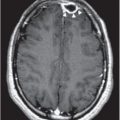html xmlns=”http://www.w3.org/1999/xhtml”>
131 Campylobacter
Campylobacter (Greek campylo, curved; bacter, rod) are motile, non-spore-forming gram-negative rods. Today they are recognized as a very common cause of gastrointestinal (GI) infection in humans in many parts of the world. Campylobacter organisms were first isolated in the early 1900s from aborted sheep fetuses. However, it was not until the 1970s that Campylobacter were isolated from stool.
While there are many members of the genus Campylobacter, the major enteric pathogen for humans is Campylobacter jejuni, although Campylobacter coli, Campylobacter fetus, Campylobacter upsaliensis, and Campylobacter lari are also pathogenic to humans. C. jejuni is most frequently associated with GI disease, and C. fetus usually causes systemic infection, often in debilitated patients. Campylobacter are microaerophilic, and although all will grow at 37°C (98.6°F), C. jejuni grows best at 42°C (107.6°F). A number of selective media are in use for the detection of Campylobacter spp. and the organisms grow optimally in a gas mixture of 5% to 10% oxygen, 1% to 10% carbon dioxide, and some hydrogen. Growth may be present following overnight incubation, but 2 days are needed before a negative report can be issued.
Although several serotypes of C. jejuni have been reported, there are few data regarding the relative virulence of these different types, although some appear to be more closely associated with the development of Guillain–Barré syndrome (GBS) than others.
Epidemiology
Campylobacter is one of the most commonly diagnosed enteric bacterial infections in many parts of the United States and Europe. It is estimated that there are more than 2 million cases per year in the United States. It is especially common in children younger than 1 year of age and in young adults, and it occurs most often in the summer. Campylobacter species are found in fowl and many wild and domestic animals, and most human infections probably result from contamination of milk and other animal food sources, especially poultry. The recent increase in consumption of raw milk has led to illness associated with Campylobacter. The organisms can also be transmitted by direct contact with infected animals and contaminated water, and cross-contamination between infected poultry and other foods is probably one of the most frequent modes of transmission. Small numbers of organisms may cause disease; as few as 800 have been shown to cause infection in volunteer studies, but the infecting dose is usually about 104. Although asymptomatic carriage of Campylobacter is thought to be uncommon in developed countries, in less developed nations carriage rates as high as 37% have been reported among children.
Clinical features
The incubation period for C. jejuni infection varies and is typically between 1 and 7 days, with most cases occurring 2 to 4 days after exposure. Very short incubation periods of fewer than 12 hours have been reported. Campylobacter jejuni illness typically presents with a prodrome of fever, headache, myalgia, and malaise for up to 24 hours before intestinal symptoms develop. The fever may be as high as 40°C (104°F), and the diarrhea varies from a few loose stools to copious watery discharge. Blood is often present in the stool but varies in amount. The illness usually lasts less than a week, but patients untreated with antibiotics often continue to excrete the organisms for several weeks. Documented bacteremia is thought to occur in the early stages of infection in up to 1% of cases. Routine surveillance of infection in England and Wales detected 394 cases of Campylobacter bacteremia in 11 years that increased with age, with a range of 0.3/1000 in children aged 1 to 4 years to 5.9/1000 in patients aged 65 years or more. Overall 89% of the
Stay updated, free articles. Join our Telegram channel

Full access? Get Clinical Tree





